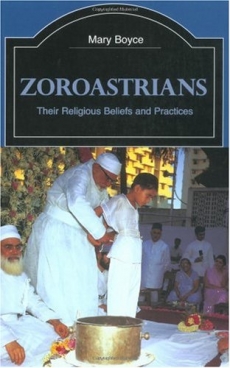
Zoroastrians: Their Religious Beliefs and Practices
Zoroastrianism is the most difficult of living faiths to study, because of its antiquity, the vicissitudes which it has undergone, and the loss, through them, of many of its holy texts. Originating over 3 500 years ago in a Bronze Age culture on the Asian steppes, it became the state religion of three mighty Iranian empires in succession, and so was endowed for many centuries with temporal power and wealth. Its lofty original doctrines came accordingly to exert their influence throughout the Middle East - an area where Judaism developed, and Christianity and Islam were born. To the east Iranian rule extended into Northern India, and there Zoroastrianism made a contribution to the development of Mahayana Buddhism. Some knowledge of the teachings of Zoroaster and of the history of his faith is therefore needed by every serious student of world religions; and the recent expansion of religious studies in universities has created a demand for an introductory book on this theme. The present work is an attempt to meet that demand. In it it has been sought to treat Zoroastrianism not merely as a mighty seminal influence, but also as a noble faith in its own right, which has held the loyalty of its followers over millennia and through harsh persecutions. Instead, therefore, of stopping, as is usual, with the worldly eclipse of Zoroastrianism by Islam, the book traces the continual history of the community through the subsequent years of oppression, down into the prosperity of modern times... | 